For most people it is enough that they mastered powered flight, but I was curious about the brothers and wanted to know more about them. I didn't find that much more information about them personally, though some of what I found is tragic. What I did find was an astounding number of inventions and innovations that were necessary for the Wright Flyer to actually work. Almost all of them are directly traced back to the brothers themselves.

The Engineering Mastery of the Wright Brothers
by LiamBean
Most people recognize that the Wright brothers mastered powered flight, but few know all of the engineering strides they made to accomplish this.
Overview
An Introduction to the Technology They Developed
Some of the technology they used came before the Wright brothers, but it wasn't well documented if at all. None of the technology was patented. Some Wright technological breakthroughs were modifications to existing information, but the Wrights did what no one had done before; they tested everything and documented what they found. Other innovations were entirely new creations based on the Wright's research.
Despite the "bicycle shop boys" image history paints them, these men were, by all rights, engineers of the first caliber.
Case in point. The airfoil was not a Wright invention, but no one had actually documented the shapes and specifics. The Wrights, using complete and meticulous research, found the best shapes (at least thirty-eight) and documented them all.
A short list of the items they "perfected" or created to achieve powered flight include:
- A lightweight engine (made of aluminum)
- The propeller
- The airfoil (or wing)
- Control surfaces for climbing and making turns
This all seems simple enough, but as you'll see every one of these items took a lot of research and every time the brothers thought they were already using the best ideas they were proven wrong and had to re-engineer each individual part from the beginning.
Wright Brother Beginnings
Prior Professions and Interests
A number of things may not be that well known about the Wright brothers. For example, neither graduated high-school.
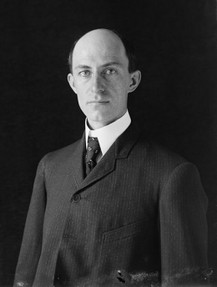 Orville (second picture) dropped out of high-school to start a printing business. Wilbur attended for all four years, but the family moved just before he was to receive his diploma.
Orville (second picture) dropped out of high-school to start a printing business. Wilbur attended for all four years, but the family moved just before he was to receive his diploma.
Wilbur (at left) planned to attend Yale university in 1885~1886, but lost heart (and almost all ambition) after losing his front teeth in a hockey accident in Dayton Ohio.
In 1889 Orville started a printing business centered around a printing press he designed and he his brother built. The press was special in that it could print large format papers with runs of up to one thousand sheets at a time. They even printed Paul Lawrence Dunbar's paper "The Tattler."
Orville continued to build printing presses and be actively involved in printing eighteen years after Wilbur's death.
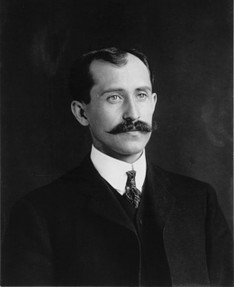 In 1892 the brothers began building and selling the "safety bicycle" under "The Wright Cycle Exchange" banner. They later changed the name of the company to "The Wright Cycle Company." Contrary to popular belief the brothers did not resell someone else's bicycle, they engineered and manufactured their own.
In 1892 the brothers began building and selling the "safety bicycle" under "The Wright Cycle Exchange" banner. They later changed the name of the company to "The Wright Cycle Company." Contrary to popular belief the brothers did not resell someone else's bicycle, they engineered and manufactured their own.
So, by the time they became interested in human flight, they'd already had two successful business behind them. One in printing and the other in bicycles.
Bicycle Engineers
Wright Bicycling Innvations
The Wright Brothers were also excellent bicycle engineers. During their time as bicycle manufacturers they introduced two innovations that have remained standard equipment in bicycles up to this day.
The first was a self-oiling hub. At the time the Wrights manufactured bicycles, Dayton only had twelve miles of paved streets. All other streets were dirt roads. This played havoc with hubs; dirt would get into them and wear them out. The Wrights developed a hub with felt seals and washers and an oil reservoir. These hubs lasted much longer than their competitors hubs.
The second was a bicycle pedal that would not "unscrew." They developed one pedal post with right hand threads and the opposite with left hand threads. This way the rider tightened the pedals at the crank while peddling.
 | First Flight: The Wright Brothers (DK Readers, Level 4) Growing up in rural Ohio, Orville and Wilbur Wright were fascinated by all kinds of vehicles -- a toy helicopter, bicycles, and the first motorized cars -- but what they dreamed... |
 | The Wright Brothers: A Biography (Dover Transportation) Written by an old friend of the Wright Brothers, this authorized account has long been considered the definitive biography. Well documented and free of extraneous technical deta... |
Interest in Flight
What Fired the Wright's Interest
In 1896 three momentous events in flight took place; events the Wrights were certain to have known about:
- May, Smithsonian Institution Secretary Samuel Langley successfully flew an unmanned steam-powered model aircraft
- Summer, Chicago engineer and aviation authority Octave Chanute began successfully testing various types of gliders along Lake Michigan
- By August, Otto Lilienthal, is reported to have made up to two thousand successful glider flights with his designs; Lilienthal was killed in the plunge of 56 feet on one of his gliders.
Up to this time no one had developed a powered aircraft capable of carrying a human being under controlled flight. In fact, up to this time, no one had figured out the ideal shape of a wing for such flight.
Controlled Flight
The Flight Triangle
Successful flight depended on three things. Power, wings (lift) and control.
The Wrights were convinced that the first two issues had been resolved and began concentrating on controlling aircraft. Gliders were the natural choice for this research. Little did the Wrights know at the time that none of the three had actually been completely figured out.
Unlike others attempting to master powered flight the Wrights felt that controlling the wing surfaces was key to steering and altitude and this, in turn, would insure pilot survival. To expand on this, all other researchers of the day determined that a human being could not possibly handle all of the controls necessary for flight; so their designs were for straight level flight with little or no pilot input. The Wrights approach was to give the pilot total control of the aircraft.
Up to this time other aviation pioneers relied on shifting body weight to control their gliders. The common thought of the day was that no pilot would be able to overcome shifting winds, changes in altitude, and obstacle avoidance and still manage total control of an airplane. The Wrights, on the other hand, felt that pilot survival depended on his or her ability to totally control the aircraft no matter what the flying conditions.
The Wrights felt that no amount of stability could be built in to the airplane and that the best chance of success was to provide the pilot with as much control over the aircraft as humanly possible. To this end the Wrights set out to give the pilot the ability to turn, gain and lose altitude, take-off, and land.
Having observed birds, the Wrights decided that controlling wing shape was key to directional flight. Thus was born the idea of wing-warping which emulated a bird's ability to change direction by lifting or dropping by changing the shape of its wings.
They also designed their wing so it "drooped" at the far ends. Though this made the wing less stable in straight level flight, the drooping was added to help minimize the effect of cross-winds on the wing. This, in turn, helped the pilot maintain control of the aircraft.
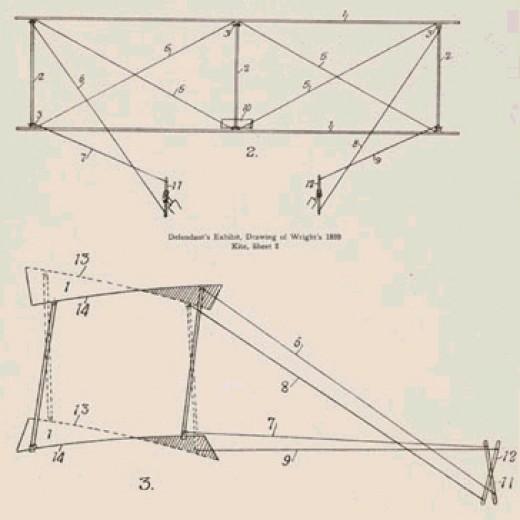 Wing Warping |
Designing The Wing
Controlling the Aircraft with Wing Shape
In 1901, being cautious, the Wrights built an unmanned glider to test both the airfoil and wing shape they'd settled on. Though they flew the glider at least fifty times (some think it was as much as one hundred) the Wrights were disappointed with the lift characteristics of the wing. They noted that the wing had only about one third the projected lift suggested by Lilienthal's formulas.
This caused the Wrights to deeply question another formula, called the Smeaton Coefficient which Lillenthal's formula was based upon. This Smeaton formula had been used for almost one hundred years for glider design. They later proved the Smeaton formula to be the correct computation of lift., but this after a lot of trial and error and hard research.
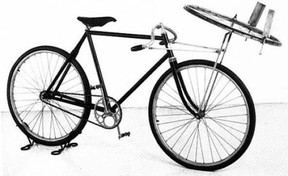 They returned to Dayton and with a wind test rig mounted on a bicycle, began testing various wing shapes. The rig was a third wheel mounted forward of the handlebars of a bicycle. This bare wheel was mounted horizontally and could spin freely in the wind. Wing designs were tested balanced against a brick shaped structure opposite the wing being tested.
They returned to Dayton and with a wind test rig mounted on a bicycle, began testing various wing shapes. The rig was a third wheel mounted forward of the handlebars of a bicycle. This bare wheel was mounted horizontally and could spin freely in the wind. Wing designs were tested balanced against a brick shaped structure opposite the wing being tested.
The brothers were said to have mounted wing shapes to this rig and then bicycle furiously along the streets to Dayton observing the effects of wind across various wing shapes.
Change in Airfoil
They eventually discovered that the wing cross section everyone else was using was too deep; 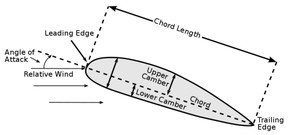 that the highest point on the airfoil was too high and actually interfered with lift. (see illustration at left)
that the highest point on the airfoil was too high and actually interfered with lift. (see illustration at left)
They settled on a wing design that was thinner with a shallower camber. The camber is the fattest part of a wing seen edge on.
They also discovered that the wing design in common use was too deep (front to back) and that wings performed better if they were longer and narrower. All of this research also lead to the discovery that their competitors were assuming the wing had more lift than it actually possessed. Eventually the formula they settled on gave an actual lift figure that was one third the amount of lift that everyone else assumed was being generated. Their figures proved to be accurate.
No small wonder there were so many crashes in those days.
Wind Tunnel
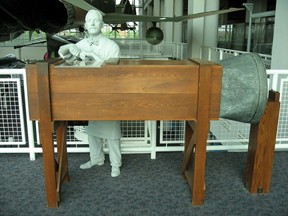 Realizing that peddling around Dayton on a modified bike was just not providing enough wind, they built a wind tunnel in their shop. They also determined that building full size wing models would bankrupt them. For this reason the wind-tunnel with 1/8 scale model wings was a logical next step in their research.
Realizing that peddling around Dayton on a modified bike was just not providing enough wind, they built a wind tunnel in their shop. They also determined that building full size wing models would bankrupt them. For this reason the wind-tunnel with 1/8 scale model wings was a logical next step in their research.
The wind tunnel was not a Wright Brothers invention. It had been developed by Francis Herbert Wenham in England to directly address the issues of unreliable results from spinning an object through the air. Wenham developed the first wind tunnel in 1871. However, the Wright wind tunnel was only the second built in the United States at that time.
The Wright's wind tunnel was all of six feet long with a fan contained in the zinc reinforced housing at one end; which looks suspiciously like a washtub. The tunnel also included an observation window so the Wrights could directly observe the effect of wind on each wing design.
The also built lift measuring balances that would give them measurable figures for actual lift. Basically this was an apparatus to test the effect of lift from each wing design. These balances were built of sharpened bicycle spoke wire and hack-saw blades. Despite the jury-rigged sound of the materials, the balances were quite sensitive and accurate.
Using this wind tunnel the Wrights conducted tests on wing designs for three months. There is no information on just how may different wing configurations the brothers tried, but some sources claim that up to two hundred different wing shapes were tested. They were trying to improve lift while reducing drag. They eventually came up with thirty-eight designs that balanced lift against drag to their satisfaction. Many of those designs are still in use today.
The "winning" wing design was eventually discovered to be a longer narrower wing with a slimmer cross-section.
"Having set out with absolute faith in the existing scientific data, we were driven to doubt one thing after another, till finally, after two years of experiment, we cast it all aside, and decided to rely entirely upon our own investigations. Truth and error were everywhere so intimately mixed as to be undistinguishable (sic). Nevertheless, the time expended in preliminary study of books was not misspent, for they gave us a good general understanding of the subject, and enabled us at the outset to avoid effort in many directions in which results would have been hopeless." - Orville Wright
Controlling the Aircraft
The control problem was eventually solved with a front canard, rear rudder, and wing warping.
Warping the wings provided directional control, the front canard enabled the flyer to gain or lose altitude, and the rudder prevented the effect of wing-warping from causing a loss of lift when executing turns.
Interestingly these control problems were solved almost simultaneously with the lift problem.
The Airfoil
The Wrights did not invent the airfoil. What they did do was determine the thirty-eight best shapes for an airfoil. On the "ramp-up" to human flight other experimenters were taking a "scatter-gun" approach to wing design. Only Otto Lillienthal had settled on a particular wing shape cross-section, but had not done much to explain why he had. He concentrated instead on documenting his experiences and the overall design of his gliders.
Lillienthal also determined to control his gliders by shifting his body weight around its center of gravity; no attempt was made to control flight through the wing surfaces.
Lillienthal was eventually killed in a glider accident which broke his spine. After what some claim was up to two thousand successful flights, he fell 56 feet when he lost control after his glider stalled. He died the day after his accident.
Warping the Wings
The brothers determined to slightly change the "rise" or "dip" of the tip of the wings by bending the wing during flight. By causing the right wing-tip to dip and the left wing-tip to rise they could effect a right hand turn. By causing the left wing-tip to dip and the right wing-tip to rise they could perform a left hand turn.Unfortunately the wing tip with more bite also produced more drag. This in turn caused the entire structure to spin slightly in the wrong direction.
This effect caused the possibility of the wing tip hitting the ground. The brothers called this effect "well digging." They solved this problem by adding a controllable rudder at the back of the glider.
The Rudder
Up to then rudders were a common addition, but all rudders were fixed. The Wrights made their rudder steerable and directional. This corrected the "well digging" problem and gave the potential pilot much more control during turns.
In effect the rudder did not directly aid the turn, the warped wing did that, what the rudder did do was correct the problem of the difference in lift between one end of the wing and the other. This effectively solved the control problem during turns.
The Canard
The Wrights also incorporated a control surface forward of the wings called a canard. The canard provided control over the pitch or up and down attitude of the airplane. Later Wright flyers moved the pitch control behind the rudder; by then it was called an "elevator."
Patent Filed
With all of the control and lift problems solved the Wright brothers applied for a patent for the "Flying Machine" on March 23, 1903. They still hadn't solved the power problem and had yet to build and actually fly a machine.
Notice in the two images just above, two glider designs.
The glider with the "deeper" wing (left hand image) is pulling the two assistants almost off their feet. On the right, the narrower wing design seems to be hovering in the air with very little help from the assistants. This narrower design is what the Wrights settled upon. Notice that the glider at right looks very much like the Flyer.
Powering the Aircraft
The Wrights were now faced with the third apex of the flight triangle. They had mastered both lift (wing shape) and control and now needed a power source for their flyer. Of course power is useless unless it is applied to something.
Two Problems
In reality the brothers faced two problems. The design of the propeller and the design of the engine. No clear data existed for proper propeller design despite the fact that they had been used for decades as propulsion for boats. No one, it seems, shared information on how to make propellers.
Propellers
According to historians the brothers found themselves deeply involved in discussions and arguments, sometimes heated, about how the propeller should be designed. They decided that the propeller should be a rotating wing with the same basic characteristics of their lifting wing. Eventually the brothers settled on a design that was made of laminated spruce carved into the proper shape by hand. The final shape of the propeller was determined by more wind-tunnel tests.
Ultimately, the Wrights outfitted the flyer with two propeller, each just over eight feet long. The propeller were to be mounted behind the wing to prevent disturbing airflow over the front of the wing. The propeller were to rotate opposite each other; one clockwise and the other counter-clockwise to neutralize the effect of torque.
Wilbur determined that the propellers they'd designed were 66% efficient at moving air.
Tests in early 2000 determined that the propellers were actually 75% efficient under normal conditions and up to 82% efficient in ideal conditions. This is remarkable considering that even the best propeller made today is 85% efficient.
The Engine
Now that the propeller design was solved they had to come up with a power plant to drive the propellers. They wrote to a number of manufacturers with weight and horsepower requirements, but no one made an engine light enough with the proper amount of horsepower to satisfy their requirements.
Charlie Taylor, one of their bicycle shop mechanics, was tasked with the development of an engine. Taylor, working closely with the Wrights, developed a power plant in six weeks.
The engine is notable in that the block was made of an aluminum copper allow (aluminum was still a rare and expensive metal), used a magneto, was fired by Nicola Tesla's still new invention the spark-plug (patented just five years before) and was water cooled. It also delivered fuel directly to the cylinders via gravity fed fuel-injection.
The Wrights needed an engine that weighed between 160~170 pounds and produced at least eight horsepower.
The engine Taylor built weight 152 pounds and produced twelve horsepower, far surpassing the Wrights bare minimum specifications.
The Catapult
Despite all of these advances the Wrights were painfully aware that their aircraft still may not fly without enough of a headwind. They had already designed a catapult system to assist in glider trials.
In typical Wright fashion, they were not about to let the variables of wind speed, take-off altitude and ambient temperatures slow them down. They beefed up the catapult system by adding more weight and more length to the catapult rail.
News Reports
On the successful flight the brothers telegraphed their father and asked him to "inform press."
Dayton papers did not even bother to run the story because the "flight was too short." But other papers got wind of the telegraph and ran mangled and error ridden stories, of course, they had no accurate information.
In fact almost no one in the U.S. took it seriously, but a Paris paper ran the story and the French were spurred to redouble their first powered flight efforts.
First Flight
It All Comes Together; Finally!
On December 17, 1903 Orville, on winning (or losing) a coin toss made the first of four flights evenly divided between the brothers. The flight lasted twelve seconds and covered one hundred twenty feet. The fourth and final flight took place around noon that same day; Wilbur was at the controls.
The last flight lasted fifty-nine seconds and covered about eight hundred and fifty-two feet of distance. The flight ended in a hard landing, damaging the flyer, but the brothers were convinced that all of the errors they now faced were directly attributable to the pilot not the airplane. The first Wright flyer cost slightly more than $1,400.00 (in 1903 dollars) to build. It did not matter that the flyer was destroyed; the Wrights now had all the information necessary to successfully build a replacement.
In 1904 the Wrights created the Wright Flyer II. On September 20, 1904, Wilbur managed to fly a complete circle, the fist time ever in a powered heavier than air aircraft. He covered over four thousand feet and flew for a minute and a half.
Secrecy and the Wright Flyer
It was another four years before the world acknowledged the feat of powered flight. This was partially the fault of the Wrights themselves. They were so concerned about competitors stealing their designs, that the brothers refused to do any flying at all, for any one, unless a signed contract for aircraft orders was made first. The U.S. Army roundly rejected this idea and the foreign press had a field-day with the brothers. The French in particular called them "bluffeur" or bluffers.
They spent the next four years improving the wings and the overall design of the aircraft.
Eventually the U.S. and French Armies expressed interest in the flyer, but refused to make any commitment to the brothers without a demonstration. Because these demonstrations were almost simultaneous, the brothers split duties with Orville demonstrating in the U.S. and Wilbur putting on exhibitions in France.
On August 8, 1908 Wilbur astounded the French by making banked turns and flying complete circles. The next day he flew figure eights. The Wrights became famous literally overnight when Wilbur proved that their Flyer not only flew, but could be completely controlled by the pilot.
Meanwhile, Orville was conducting demonstrations for the U.S. Army at Fort Myer on September 3, 1908. On September 9, 1908 he made an hour long flight. On September 17, 1908 Orville took along as passenger, Lieutenant Thomas Selfridge. Mere minutes into this flight one of the two propeller shattered sending the aircraft spiraling into the ground. Selfridge suffered a fractured skull and died that same night; Orville endured a broken left leg and four broken ribs. These injuries took five weeks to recover from. Selfridge became the first aircraft fatality.
Coda
The Wrights Accomplishments - Listed
As the reader can see from the article the Wrights faced many problems, not the least of which was inaccurate and downright deadly information. And though the Wrights thought, at the beginning at least, that the only problem they had to solve was lift, they found, quite the hard way, that everything widely accepted as fact was wrong.
They essentially had to rework and recalculate every aspect of flight characteristics of their flyer to get it right. Then, even after perfecting powered flight, it was another four years before the world acknowledged their achievement.
In the drive to create a flying machine the Wrights pioneered or substantially modified the following:
- Determined the ideal airfoil design based on Lilienthal's basic shape
- Reworked lift formula and figures for accuracy
- Created wing-warping for maneuverability
- Added a movable rudder (for directional control)
- Added a movable canard or elevator (for attitude control)
- Used a wind-tunnel to determine best wing shape
- Discovered thirty-eight ideal wing shapes
- Created superior propellers based on their own airfoil design
- Created a light weight gasoline powered fuel injected engine; a first
- Created an improved catapult system for launch
- Created an airplane that could carry a person and be completely controlled by that person
Perhaps best of all the Wrights, with their meticulous documentation, created a manned powered flying machine that could be reproduced and marketed to an anxious public.
If there are any lessons to be taken from this account there are three:
- Despite the constant threat of being beaten to powered flight, the Wrights took their time and let research and facts guide their efforts
- When research did not jibe with "known facts" they stuck with their research
- Despite numerous, almost countless setbacks, they continued on until their efforts proved successful
You might also like
The Engineering Mastery of Isambard BrunelBurnel changed civil and mechanical engineering by thinking big. But it wasn'...
How secure are Swipe CardsSwipe cards or RFID Cards are used for all aspects of security. Should we re...
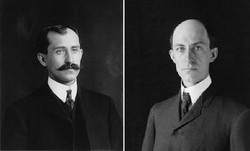

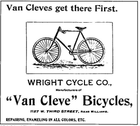




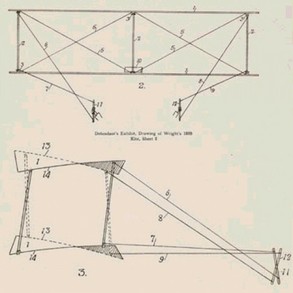
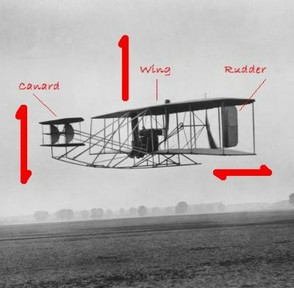
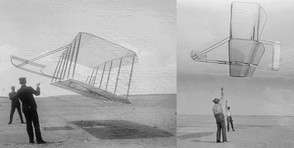
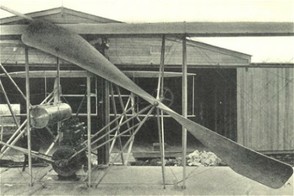
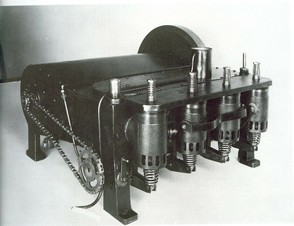
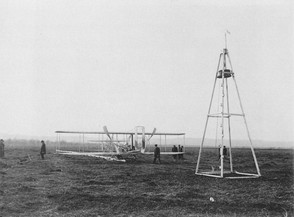

 Crêpes and Crêpe Disheson 09/14/2016
Crêpes and Crêpe Disheson 09/14/2016
 About Me - Liam Beanon 11/28/2014
About Me - Liam Beanon 11/28/2014
 About Ebolaon 11/08/2014
About Ebolaon 11/08/2014

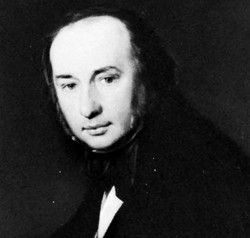

Comments
Hollie T: I was shocked myself and thank you very much.
This is a really interesting and detailed page, many congratulations on the EC award. :)
Thanks Dustytoes. When I started the research I had no idea they had done so much work to achieve flight. Even though a little of what they knew from others was right, they had no way of knowing in a cloud of bad information. They literally had to test every single part that went on their flyer.
We seldom get to see all the effort put into the beginnings of gadgets and machinery we take for granted today. I've always been interested in the Wright brothers mainly because I grew up with their last name. Thanks for the informative and interesting page and congrats on the Editor's Choice Award.